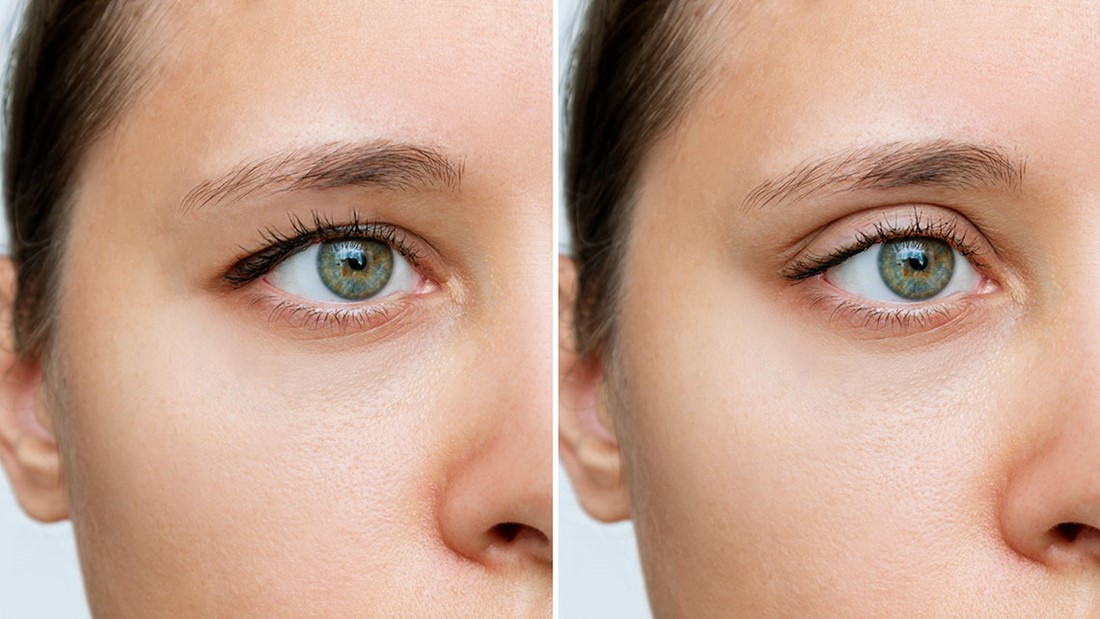Blepharoplasty surgery
What does blepharoplasty surgery involve?
Blepharoplasty is one of the most common surgical procedures and is generally safe and effective. It usually results in an improvement in function and/or appearance. Upper eyelid blepharoplasty involves the area between the eyebrows and the eyelashes whereas lower lid blepharoplasty involves the area between the lower lid eyelashes and the cheek. Various proportions of skin, orbicularis muscle and underlying fat is removed or repositioned to give the desired result.
Upper eyelid blepharoplasty involves first marking and measuring out the skin. Various degrees of skin, fat and muscle are taken and dissolvable stitches are used to close the skin. This is usually safe and predictable.
Lower eyelid blepharoplasty is a more complex procedure, requiring an incision under the lower lid running out into the area of the ‘crow feet.’ The skin is then folded down to reveal underlying structures and various amounts of each are excised or repositioned. If in a younger patient, the main problem is the bulging fat, a transconjunctival ‘scarless’ approach from under the eyelid is used. Closure of skin is usually with dissolvable sutures.
For both upper and lower eyelid blepharoplasties, the surgeries can be performed with local or general anaesthetic. If under local anaesthetic, a mild sedation can be used if preferred.
Prior to surgery, if having general anaesthetic, patients will be required to starve for 6 hours prior to surgery. Makeup or skin creams must be avoided on the day of surgery. Patients should arrange a friend or family member to accompany them home if a general anaesthetic is used.
A bandage may be kept over the eyes to help settle swelling and if bilateral surgery is performed then both eyes will be padded.
Blood thinning medications such as aspirin etc should be stopped prior to surgery and this will be discussed with you in the clinic in advance of surgery.

Is blepharoplasty surgery painful?
The surgery itself is not usually painful aside from the anaesthetic injection, which stings somewhat. Postoperatively there is not much pain and simple painkillers such as Paracetamol, are usually all that is required. Work can be resumed in 7-10 days and at this stage, there will be minimal signs of surgery. For lower lids, the bruising and swelling takes a little longer at around 10-14 days. Working from home will usually be possible from around 2 days postoperatively.
What are the risks of blepharoplasty surgery?
There are risks associated with every operation and it is important to understand these to make an informed decision. Mr Modi will go through these with you at your appointment.
With any operation there is some bleeding, bruising and swelling. The eyelids are very vascular so it is normal to have some bruising and swelling after surgery in this area. There is a low risk of infection and an antibiotic ointment is supplied after surgery to apply to the eyelids twice a day for 7-10 days.
With eyelid surgery, there is some risk to the eye but if the proper precautions and care are taken, this is extremely unlikely.
The most important risk is that there can be either too much or too little skin removed. If too much is removed, then there can be a risk of incomplete eyelid closure (lagophthalmos) and this can cause exposure of the ocular surface and damage to the eye and vision. In lower lid blepharoplasty, taking too much skin can result in an ectropion, where the eyelid turns out and this can cause damage to the ocular surface due to exposure and also look unsightly. This is one of the reasons why eyelid surgery is most often performed by Oculoplastics surgeons. Oculoplastics surgeons are ophthalmologists (eye surgeons), who will have trained in looking after the eye and eyelids specifically.
If too little skin is removed, there can be an unsatisfactory result, however this can be remedied by taking more skin at a further procedure.
Instructions after blepharoplasty surgery
Day 1-2 – keep the eyes dry. It will be possible to bathe or shower whilst keeping the eyes from getting wet. A small amount of splashing is unlikely to cause a problem.
It is helpful to sleep with an extra pillow as this will prop up the head, which will help reduce swelling postoperatively.
Day 2-4 – review will be arranged at this stage
Day 3-7 – The eyes can be gently washed with soap and water. It is important to dab but not to rub the eyes. The crusts will come away when ready.
Day 7-10 – Review will usually be arranged at around this stage and sutures may be removed if necessary.
Day 14 – Makeup can be used again. Swelling and bruising will be barely noticeable to most people.

